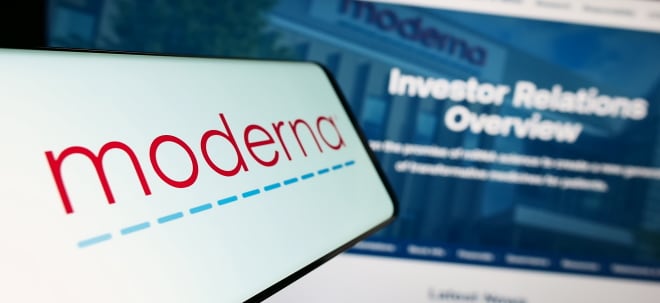New Copia Automation Report Reveals $4.29M/Hour Downtime Cost for C-Suite, Exposing Critical "Perception Gap" with Plant Floor
This fundamental disconnect in calculated risk creates strategic blind spots, leaving companies vulnerable to the very threats leadership fears most.
NEW YORK, July 30, 2025 /PRNewswire/ -- Copia Automation, the leader in Industrial Code Lifecycle Management (ICLM), today released its 2nd Annual State of Industrial DevOps Report. The comprehensive study of 200 senior industrial leaders reveals an industry at a clear tipping point, with 92% of organizations now invested in or actively planning to adopt Industrial DevOps. However, this momentum is threatened by a critical "perception gap" between senior executives and operational managers on the true cost and causes of downtime, which can undermine strategic alignment and expose companies to risk.
"Fragmented tools are no match for cyber-physical complexity." - Sebastián Trolli, Frost & SullivanThe 2025 report found that while the overall average cost of downtime is a staggering $3.63 million per hour, C-Suite downtime numbers are 51% higher, at an average of $4.29 million per hour, vs. Managers ($2.84M). This gap extends to the root causes of disruptions. The C-Suite attributes over half (52%) of all downtime to industrial code issues, while operational managers see code as a much smaller factor (30%), pointing more frequently to hardware malfunctions and human error. Cybersecurity breaches also highlight this divide, ranking as a top concern for C-Suite (45%) but a low-level issue for Managers (22%).
"This year's report reveals a crucial insight: while the adoption of Industrial DevOps is accelerating, a hidden 'perception gap' across leadership tiers can silently sabotage progress," said Adam Gluck, CEO and Founder of Copia Automation. "If the C-Suite sees a multi-million dollar problem driven by code and cyber risk, while managers are focused on immediate hardware fixes, the resulting misalignment is immense. A robust Industrial Code Lifecycle Management platform provides the single source of truth needed to close that gap and align the entire organization on both risks and solutions."
The findings show that the market is rapidly moving to standardize its approach to managing the complex code that powers modern manufacturing.
"The 2nd Annual State of Industrial DevOps Report signals a tipping point: 92 percent of manufacturers are committed to Industrial DevOps within the next year, and 90 percent say their teams will benefit directly," said Sebastián Trolli, Research Manager, Global Head of Industrial Automation & Software at Frost & Sullivan. "That momentum reflects a hard-won reality—fragmented tools are no match for cyber-physical complexity. The winners will standardize now, while adoption is surging, rather than scramble later when industrial AI demands bullet‑proof code governance. They'll enter the coming decade with transparent change logs, instant recovery paths, and a security posture built for continuous learning. "
Jeff Winter, Vice President, Business Strategy at Critical Manufacturing, and a Contributing Analyst & Editor for this report, commented on the operational implications of the findings: "The data shows a heavy reliance on ad-hoc fixes to solve immediate problems, but this creates a cycle of technical debt. A quick win adds value; a quick fix just adds time down the road. The industry's move toward Industrial DevOps is a move toward investing in solutions that enhance long-term value, not just extend the life of a temporary patch."
Other key findings from the report include:
- The AI Paradox: While 89% agree AI will unlock new efficiencies, leaders are focused on strategic risk (data security is a top concern at 40%), while managers prioritize tactical features like code optimization. This reveals a disconnect in how to approach and govern industrial AI.
- The Exploding Attack Surface: The average enterprise now manages over 2,000 PLCs and another 2,100 associated devices, creating a crisis of scale. The #1 valued AI feature is "AI-driven version control with change detection & anomaly alerts" (49%), showing teams are demanding intelligent tools to manage this complexity.
- The Unifying Mandate: A resounding 87% of leaders believe it is very or extremely important to integrate OT cybersecurity tools with industrial code management tools, reinforcing the need for a unified platform.
- The Final Hurdle is Human: Change management resistance (43%) is now the top barrier to adoption, surpassing budget (26%) and competing priorities (32%).
The full 2025 State of Industrial DevOps Report provides a detailed analysis of these trends, breaks down data by seniority, and offers a five-step playbook for organizations to benchmark their own maturity using the wealth of benchmark data within this report.
The full report is available to download here.
About Copia Automation: Copia Automation is the leader in Industrial DevOps, which delivers Industrial Code Lifecycle Management (ICLM). Its platform empowers industrial enterprises to manage the complex lifecycle of automation code that runs their production lines. By embedding practices like automated backup and recovery, Git-based version control, and collaborative change management directly into the OT environment, Copia provides the visibility and control needed to streamline production, preempt crises, and accelerate growth in the age of AI. What truly sets Copia apart is its integrated AI, intelligently enhancing every aspect of the platform to deliver a smarter, more valuable asset for your operations.
With its headquarters in New York City, Copia Automation is a member of the World Economic Forum as a Technology Pioneer in Manufacturing.
For more information, visit www.copia.io.
![]() View original content to download multimedia:https://www.prnewswire.com/news-releases/new-copia-automation-report-reveals-4-29mhour-downtime-cost-for-c-suite-exposing-critical-perception-gap-with-plant-floor-302518945.html
View original content to download multimedia:https://www.prnewswire.com/news-releases/new-copia-automation-report-reveals-4-29mhour-downtime-cost-for-c-suite-exposing-critical-perception-gap-with-plant-floor-302518945.html
SOURCE Copia Automation



